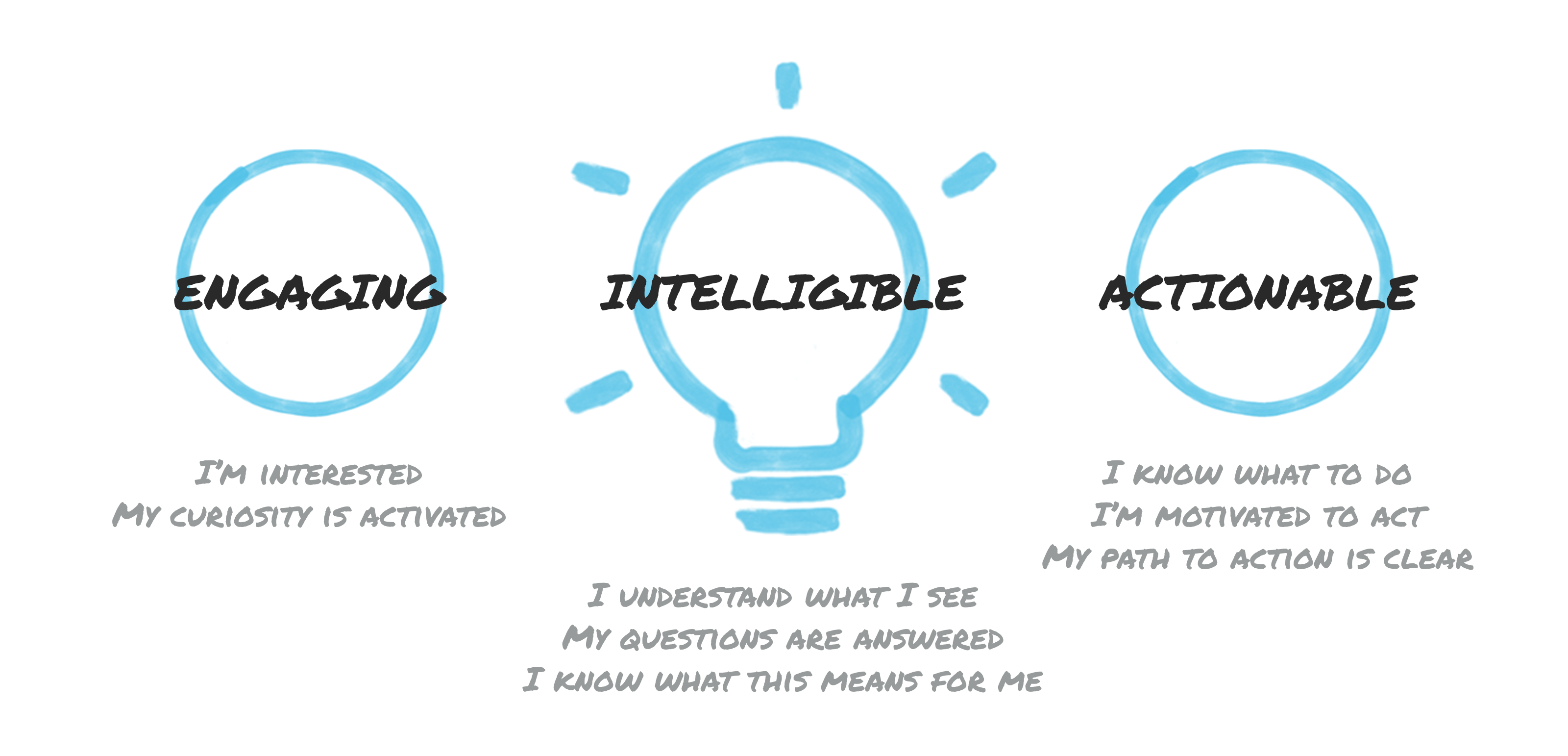10 Sep What is a cognitive-behavioral product experience?
Recently I listened to an episode of the db/bd podcast — an interview with Manuel Lima from a couple of years ago. Lima is a well-known data visualization designer.
He said something that struck me — “I feel it’s such a blind spot for many designers — the lack of knowledge of cognitive science and psychology.” Jessica Helfand, who along with Michael Beirut was conducting the interview, responded that “Conversations like this remind me there should be a behavioral design kind of community.” Huh. I couldn’t agree more.
“Conversations like this remind me there should be a behavioral design kind of community.”
Every day we — I and my team — are reminded how important it is to understand how our brains work so we can be more effective product designers. Insights about how people make sense of information, how we learn, what engages and motivates us — or does the opposite — can be tremendously valuable to creating effective product experiences.
Why hasn’t an understanding of cognitive science and psychology become part of the product designer’s standard toolkit? Part of the answer, I think, is that it’s not always easy to draw a straight line between insights about human cognition and product design.
Although we think of ourselves now as a Cognitive-Behavioral Practice, we came to cognitive via an indirect route.
Data Visualization + UX
10 years ago, when we formed GroupVisual.io, our team was mainly known for data visualization design. The roots of our practice and our team go back to the early 2000s when we were creating products for browsing, visualizing and interacting with complex data. At that time the company was known as Visual i|o.
For the last 10 years, companies dealing with complexity challenges have come to us for our combination of product design and data visualization skills. As part of our service we’ve helped organizations deliver more intuitive and intelligible data experiences. Six years ago we perceived a need for an education program at the intersection of UX and data visualization. Working with my friend Bang Wong, who at the time was Creative Director at the Broad Institute, we launched DVUX [Data Visualization + UX], which we deliver at conferences, and at university and corporate events.
But something was missing…
A few years ago we began to recognize that our practice model seemed to be missing something important. Historically we have seen our quest as trying to make data and analytics more intelligible and useful for people hoping to solve problems and make decisions.
Although this is no doubt still a valuable and worthwhile goal, we started to realize that simply making data easy to understand was only one piece of a much larger challenge. We felt we needed to ask ourselves — for what purpose are we trying to make data easier to understand? How do we assess the value of an insight? Does it help someone solve a meaningful problem, or achieve a worthwhile goal?
To complicate matters, many people, we started to recognize, didn’t really care much for data visualizations.
An insight might be welcome, but the effort to extract that insight from an image might not be worth their time.
Around the same time, product owners were beginning to recognize the importance of engagement and stickiness to the value of their product. We started to look at engagement as a key component of a valuable product experience.
We got curious about what might bring somebody to want to decode a data representation. A user can get a lot of benefit, and maybe rich insights, if they invest the time and energy to figure it out.
But sometimes people are too busy, or too focused on something else, to expend that effort. Although we can make, and many people do make, useful and even beautiful data visualizations, sometimes you’re not in the mood, on the receiving end, to try to figure out what it may be saying to you.

Precondition for seeking an insight?
So we asked ourselves — what is the precondition for someone to want to engage with a data experience?
And then, let’s say we’re skillful enough to get them motivated to engage and they actually get an insight from it. What happens after that?

Outcome of an insight?
What kind of useful outcome might they expect?
The challenge of ‘actionable insights’
People talk about ‘actionable insights’ but how exactly does an insight get linked to action? How can an insight help people solve some kind of problem or make a decision?
We realized that’s a complicated process. Just getting an insight is far from a guarantee that someone is going to take action based on it. We have insights all the time. We know what the data is telling us, but we nevertheless often resist taking what would seem to be the recommended action.
It’s time to lose weight. You really need to save some money. Or you need to go have a difficult conversation with somebody to solve some problem.
Onerous actions. Many of us just don’t have the energy or motivation to actually do what we clearly know we should.
We started to see that this was all part of a lifecycle, involving several components — a user challenge, an engagement challenge, potentially valuable information, and some kind of action or workflow that might help a user solve their challenge. Underlying it all was a potential motivation challenge.

A cognitive product lifecycle (driven by motivation)
We saw that we needed to come up with a much more robust understanding of human cognition — human nature in general — and figure out how to incorporate that into our design practice.
Solving meaningful problems
All of this drove us to think about how to make products that are valuable, useful, and that people very much want to use. How do these products help customers and users solve meaningful problems? — Helping a parent of an autistic child, say, better understand what might be affecting their child’s behavior, or helping a business manager understand why their program is underperforming (and how they might fix it), or helping an aquarist who has invested $15k in their marine fish tank understand why their tropical fish and coral don’t seem too happy.
And how can we best build value for the organizations investing in their products?
To answer these questions we decided we needed to dive much more deeply into the science underlying human cognition to really understand how to create truly valuable and effective products.
This has turned out to be a fruitful journey for us. Over the last few years we’ve invested time and energy, and evolved what we believe is a pretty robust framework for integrating good cognitive understanding of a product’s customers and users into a set of product strategies and tactics.
Combined with an iterative, agile-friendly process and rich set of cognitive artifacts, we now see it reliably resulting in happy product outcomes.
We’ve learned a lot along the way, and continue to discover useful insights to convert to practice. We look forward to sharing many of these insights with you.
If you would like to engage with us in this conversation please reach out. And if you think we can help you on something you’re working on, please talk to us. As a design consultancy, we help all kinds of companies solve problems with their products, and love a good complex challenge.
